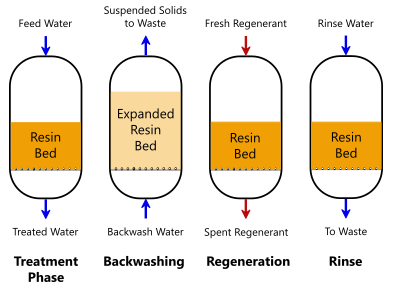The Importance of PFAS Treatment in Cleaning Contaminated Water
The Importance of PFAS Treatment in Cleaning Contaminated Water
Blog Article
How PFAS Therapy Ensures Tidy and Lasting Water
The presence of PFAS, typically understood as "for life chemicals," postures substantial obstacles to water high quality and public health and wellness. The effects of these therapies extend beyond prompt wellness advantages; they elevate critical inquiries concerning lasting water administration methods that should be addressed to make sure a durable future.

Understanding PFAS Contamination
PFAS, or per- and polyfluoroalkyl substances, have arised as a substantial ecological concern due to their extensive occurrence and perseverance in the setting. These artificial chemicals have actually been utilized in various industrial applications and consumer products, including non-stick cookware, waterproof clothes, and food product packaging, because of their special properties such as water and grease resistance.
The contamination of soil and water resources by PFAS takes place largely via commercial discharges, firefighting foam use, and seeping from garbage dumps. pfas management. When released, these materials are immune to destruction, causing their build-up in the atmosphere. This persistence raises critical issues, as PFAS can take a trip lengthy ranges with groundwater and surface area water systems, affecting alcohol consumption water products and ecological communities

Health Risks of PFAS
The perseverance of PFAS in the atmosphere raises substantial health and wellness concerns for individuals subjected to these compounds. Research study has actually linked PFAS direct exposure to different adverse wellness effects, consisting of immune system dysfunction, liver damages, and enhanced threat of certain cancers.
The universality of PFAS in consumer items, such as non-stick cookware, water-repellent fabrics, and food packaging, further enhances the danger of exposure. Drinking water polluted with PFAS is a significant concern, as these chemicals can leach into groundwater resources. Prone populations, including children and those living near commercial sites, may encounter elevated dangers as a result of their developing systems and potential for higher direct exposure levels.
As understanding of these health risks remains to expand, regulatory companies are starting to establish guidelines for PFAS degrees in drinking water. Public health initiatives are necessary to mitigate exposure and secure areas from the long-term effects of these dangerous compounds.

Cutting-edge Therapy Technologies
How can we properly take on the challenges presented by PFAS contamination in water sources? Ingenious therapy innovations are arising as important remedies in the mission for tidy water. These methods concentrate on the elimination or damage of per- and polyfluoroalkyl materials (PFAS), which are well-known for their perseverance in the environment.
One appealing strategy is adsorption using sophisticated products, such as activated carbon and ion exchange resins. These products have actually shown efficacy in catching PFAS particles from water. Another notable modern technology is membrane layer filtration, which uses nanofiltration and turn around osmosis to different impurities at the molecular level, thus supplying an obstacle versus PFAS.
Additionally, advanced oxidation processes (AOPs) utilize their explanation solid oxidants to damage down PFAS substances into harmless by-products. This technique is specifically reliable for dealing with very contaminated water sources. Bioremediation techniques, employing particular bacteria, are also being explored to deteriorate PFAS.
As research study continues, hybrid systems that integrate several innovations might use improved efficiency, attending to the intricacies of PFAS contamination. The growth and application of these ingenious therapy technologies are vital steps toward ensuring the safety and sustainability of our water sources.
Advantages of Reliable PFAS Therapy
Efficiently treating PFAS contamination in water resources substantially improves public health and wellness and environmental safety. PFAS, often described as "permanently chemicals," are immune to deterioration and can build up in the body, causing serious wellness dangers such as cancer, liver damage, and immune system disorder. By executing efficient treatment techniques, communities can minimize exposure to these unsafe compounds, inevitably enhancing the wellness outcomes of their populaces.
Moreover, effective PFAS therapy contributes additional info to the conservation of regional ecological communities. Contaminated water can adversely influence aquatic life and interrupt the fragile balance of regional environments. By guaranteeing tidy water, therapy processes secure biodiversity and keep environmental honesty.
In addition, effective PFAS removal can cultivate public self-confidence in water quality. When communities are guaranteed that their alcohol consumption water is devoid of dangerous contaminants, it promotes a sense of security and health. This trust is vital for area involvement and support for ongoing water administration efforts.
Future of Water Sustainability
In the middle of expanding problems about water quality and scarcity, the future of water sustainability rests on ingenious techniques and joint efforts. As areas encounter the looming hazards of impurities like PFAS, the growth of innovative treatment technologies is vital. These technologies not only concentrate on the elimination of harmful substances but likewise advertise the reuse and recycling of water, therefore minimizing overall need.
Furthermore, reliable water governance plays a crucial role in guaranteeing sustainable practices. Policymakers have to incorporate clinical research with regulatory frameworks to establish clear standards for water usage and treatment. Stakeholder engagement, consisting of regional neighborhoods and industries, cultivates a feeling of shared responsibility and urges lasting methods across numerous markets.
Investment in infrastructure useful reference is additionally essential; updating aging systems to incorporate contemporary filtration and purification approaches can dramatically improve water quality. In addition, accepting eco-friendly modern technologies, such as all-natural filtration systems, can give eco-friendly options.
Eventually, the future of water sustainability hinges on an alternative approach that integrates technology, policy, and area involvement. By focusing on these elements, we can secure our water resources for generations to find, making certain tidy and sustainable water for all.
Final Thought
In final thought, the efficient therapy of PFAS is necessary for making certain tidy and lasting water. Eventually, durable PFAS therapy methods add to long-lasting durability in water administration, promoting public count on in water high quality and promoting sustainable techniques.
Report this page